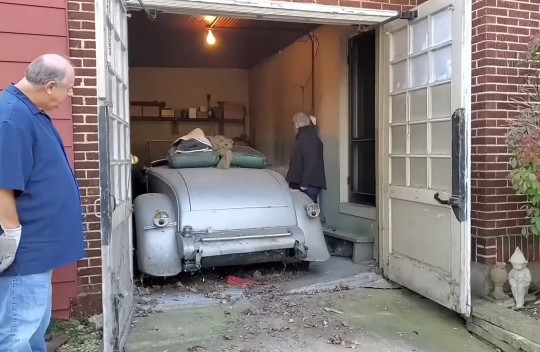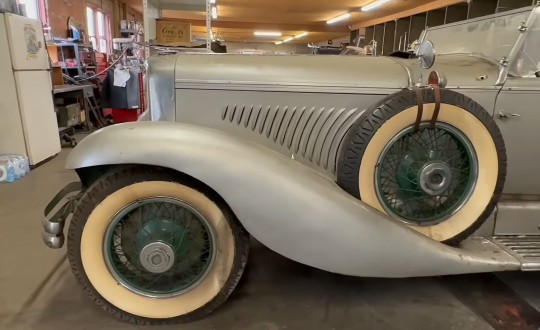Barn Find Gold: Million-Dollar 1931 Duesenberg Model J Spent 55 Years in Hiding
But this Model J is more than that because it spent a whopping 55 years in storage. That’s not a typo, folks. This beauty was parked in a garage back in 1967 and it remained in hiding until Doug Pray of the Auburn Cord Duesenberg Company was called to rescue it sometime in late 2022.
If you’re not familiar with the latter, it’s a company that not only sells Auburn, Cord, and Duesenberg classic cars, but also provides service and parts for automobiles built by these defunct brands, all of which went out of business in 1937.
A 1931 version of Duesenberg’s iconic nameplate, this Model J is one of less than 390 examples known to exist. But it’s actually much rarer than that thanks to the way luxury cars were built at the time. You see, while modern automobiles are good to go as soon as they leave the assembly line, most Duesenbergs were delivered as rolling chassis to various coachbuilders.
About half of the Model Js were bodied by Duesenberg chief designer Gordon Buehring and his Chicago-based firm called La Grande, but the other ones were split among many independent coachbuilders, including Franay, Gurney Nutting, and Saoutchik.
This specific variant, known as the Convertible Coupe, was finished by the Walter M. Murphy Company. And it’s one of only 25 cars built by this manufacturer. All told, it’s one of the rarest Model Js out there!
The other amazing thing about this Duesy is that the car took 55 years of storage like a champ. Not only does it appear to be rust-free, but the original paint is still in decent condition, as is the green upholstery on the seats (including the rumble unit in the back). Sure, the engine no longer runs, but it’s a numbers-matching unit that looks like it could come back to life without a rebuild.
As you might have already guessed, the car is off to a better life. Now that the car is at the Auburn Cord Duesenberg Company’s headquarters, Doug Pray is looking to get it running again and put it back on the road. It’s unclear whether the Duesy will be restored or revived as an unmolested survivor, but it may hit the auction block at some point.
And when it does, this Model J will change hands for a seven-figure sum. That’s right, Model Js are extremely expensive nowadays and cross the auction block for millions of dollars. Granted, not quite all of them reach the magical $1-million mark, but of the 29 examples auctioned over the last couple of years, only eight found new homes for less than that.
And six of them changed hands for more than $3 million, one fetched $4.6 million, while another one sold for $5.7 million. But Model Js can get even more expensive than that. An SSJ version previously owned by Gary Cooper was sold for $22 million in 2018, a sum that made it the most expensive American car ever auctioned.
Sure, this 1931 Model J is nowhere near as valuable, but the fact that it’s an unrestored survivor gives it million-dollar status in today’s classic car market.
Like all Model Js, this Duesy packs a 420-cubic-inch (6.9-liter) straight-eight engine under the hood. Based on the company’s successful racing mill from the 1920s, the eight-cylinder delivered 265 horsepower in naturally aspirated form. It was enough to push the car toward a top speed of 91 mph (146 kph) and make it America’s fastest production car at the time of its release.
Duesenberg also offered supercharged versions of the engine in the Model SJ and SSJ, rated at 320 and 400 horsepower, respectively. Both cars were reportedly capable of top speeds over 130 mph (209 kph). In 1935, a modified Duesenberg Special based on the Model J reached more than 150 mph (241 kph) at the Bonneville Salt Flats.
Popular with movie stars and royalty, the highly expensive and fast Model J was Duesenberg’s final car. In 1937, the Duesenberg company was dissolved, alongside Cord and Auburn, after E. L. Cord sold his financial empire to Aviation Corporation. Luckily enough, cars like this 1931 Model J survived to tell the spectacular Duesenberg story.



